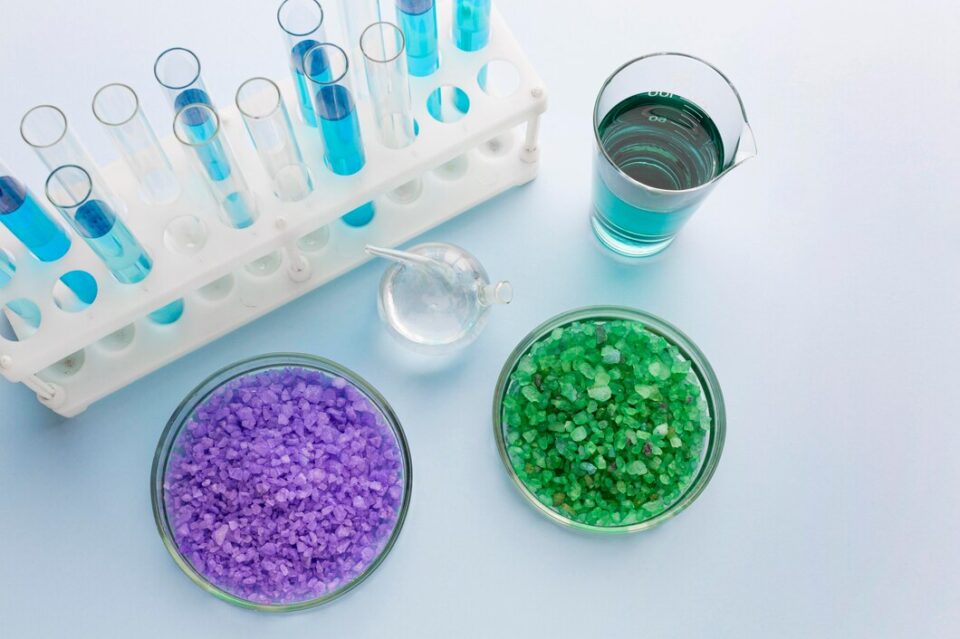Protein research plays a crucial role in understanding biological processes, drug development, and disease mechanisms. Among the various tools and techniques utilized in protein research, Protein A Magnetic Beads have emerged as a valuable asset for researchers. These innovative beads offer a multitude of advantages, particularly when used in conjunction with lytic solutions. By harnessing the power of Protein A Magnetic Beads and optimizing their application in protein analysis, researchers can achieve enhanced protein purification, improved efficiency in biomolecular interactions, and significant advancements in biomedical research. This article delves into the benefits of incorporating Protein A Magnetic Beads in protein research, with a focus on the advantages provided by lytic solutions for maximizing research outcomes.
Introduction to Protein A Magnetic Beads
Protein A magnetic beads are tiny particles designed to specifically bind to proteins, aiding in various research applications. These beads have revolutionized protein purification and interaction studies due to their high specificity and efficiency.
Understanding the Basics of Protein A Magnetic Beads
Protein A magnetic beads work by utilizing the binding properties of Protein A, a bacterial protein that binds strongly to the Fc region of antibodies. When coupled with magnetic beads, Protein A becomes a powerful tool in isolating and studying proteins with antibody tags.
Historical Development and Significance in Protein Research
Protein A magnetic beads have a rich history in protein research, dating back to the 1970s when Protein A was first discovered for its antibody-binding capabilities. Since then, these magnetic beads have become indispensable in various protein studies, offering researchers reliable and efficient ways to manipulate and analyze proteins.
The Role of Protein A Magnetic Beads in Protein Research
Protein A Magnetic Beads play crucial roles in both biomolecular interaction studies and protein purification techniques, offering researchers versatile tools for their experiments.
Protein A Magnetic Beads in Biomolecular Interaction Studies
In biomolecular interaction studies, Protein A magnetic beads are used to capture and study protein-protein interactions, antigen-antibody binding, and other crucial molecular interactions. Their high specificity and ease of use make them ideal for these applications.
Protein A Magnetic Beads in Protein Purification Techniques
For protein purification, Protein A magnetic beads excel in isolating target proteins from complex mixtures. By exploiting the strong binding affinity of Protein A to antibodies, researchers can efficiently purify proteins of interest with high yield and purity.
Advantages of Using Lytic Solutions with Protein A Magnetic Beads
Lytic solutions enhance the efficiency and effectiveness of protein extraction and purification when used in conjunction with Protein A magnetic beads.
Enhanced Lysis Efficiency with Lytic Solutions
Lytic solutions aid in breaking down cell membranes and releasing proteins for downstream applications. When combined with Protein A magnetic beads, they improve the lysis process, resulting in higher protein yields.
Improved Protein Recovery and Stability
By using lytic solutions with Protein A magnetic beads, researchers can enhance the recovery and stability of purified proteins. This leads to better quality protein samples for further analysis and experimentation.
Enhanced Protein Purification with Protein A Magnetic Beads
Compared to traditional purification methods, Protein A magnetic beads offer increased efficiency, yield, and purity in protein isolation processes.
Comparative Analysis with Traditional Purification Methods
When compared to traditional purification methods like column chromatography or centrifugation, Protein A magnetic beads provide faster and more specific purification of target proteins, reducing time and resources required for the process.
Increased Yield and Purity in Protein Isolation
The use of Protein A magnetic beads results in higher protein yields and purities, making them ideal for isolating proteins for various research applications. Researchers can obtain cleaner and more concentrated protein samples using these innovative beads.
Applications of Protein A Magnetic Beads in Biomedical Research
Protein A magnetic beads are like the swiss army knife of the biomedical world, coming in handy for diagnostic and therapeutic applications in medicine. From identifying disease biomarkers to isolating specific proteins for targeted therapies, these beads play a crucial role in advancing medical research.
Protein Analysis in Drug Discovery and Development
When it comes to drug discovery and development, protein analysis is the bread and butter of researchers. Protein A magnetic beads swoop in to streamline this process, helping researchers identify potential drug targets, screen for drug candidates, and characterize protein interactions with ease.
Optimizing Protein Analysis Using Protein A Magnetic Beads
Efficient protein binding is the name of the game in protein analysis, and protein A magnetic beads bring their A-game to the table. By optimizing protocols for binding, researchers can maximize their yield and get the most out of their protein samples.
Integration with Analytical Techniques for Comprehensive Analysis
Protein A magnetic beads aren’t content with just being a one-trick pony. They love to play nice with other analytical techniques, making it a breeze for researchers to achieve comprehensive protein analysis. From mass spectrometry to western blotting, these beads are the ultimate team players.
Comparing Protein A Magnetic Beads to Traditional Methods in Protein Research
When it comes to traditional methods in protein research, protein A magnetic beads definitely have their moment in the spotlight. While they offer benefits like higher binding capacity and faster processing times, they do have limitations such as potential non-specific binding. It’s all about weighing the pros and cons to see if these beads are the right fit for your research needs.
In conclusion, the utilization of Protein A Magnetic Beads in protein research, coupled with the strategic use of lytic solutions, offers a promising avenue for advancing scientific discoveries and technological innovations in the realm of biomedicine. From enhancing protein purification processes to optimizing protein analysis techniques, the synergy between Protein A Magnetic Beads and lytic solutions paves the way for more efficient and effective research outcomes. By harnessing the potential of these cutting-edge tools, researchers can unlock new insights into the complex world of proteins, ultimately leading to significant advancements in various fields of study.

